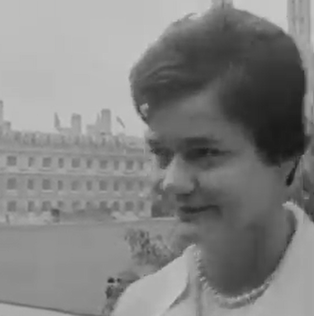History
The journal was originally established in 1872, as
- Journal of the Society of Telegraph Engineers (1872–1880)
Then underwent a series of name changes
- Journal of the Society of Telegraph Engineers and of Electricians (1881–1882)
- Journal of the Society of Telegraph-Engineers and Electricians (1883–1888)
Until in 1889 it settled into
- Journal of the Institution of Electrical Engineers (1889–1940)
The journal remained under that name for over 50 years.
From 1926 to 1940, a new journal was started
- Institution of Electrical Engineers - Proceedings of the Wireless Section of the Institution (1926–1940)
In 1941, the journals were reorganized in distinct parts. From 1941 to 1948 those were
- Journal of the Institution of Electrical Engineers - Part I: General
- Journal of the Institution of Electrical Engineers - Part II: Power Engineering
- Journal of the Institution of Electrical Engineers - Part IIA: Automatic Regulators and Servo Mechanisms
- Journal of the Institution of Electrical Engineers - Part III: Communication Engineering
- Journal of the Institution of Electrical Engineers - Part III: Radio and Communication Engineering
- Journal of the Institution of Electrical Engineers - Part IIIA: Radiocommunication
- Journal of the Institution of Electrical Engineers - Part IIIA: Radiolocation
In 1949, until 1954, the publications were reorganized into
- Journal of the Institution of Electrical Engineers
and
- Proceedings of the IEE - Part I: General
- Proceedings of the IEE - Part IA: Electric Railway Traction
- Proceedings of the IEE - Part II: Power Engineering
- Proceedings of the IEE - Part IIA: Insulating Materials
- Proceedings of the IEE - Part III: Radio and Communication Engineering
- Proceedings of the IEE - Part IIIA: Television
- Proceedings of the IEE - Part IV: Institution Monographs
Which in 1955 were renamed
- Journal of the IEE (1955–1963)
and
- Proceedings of the IEE - Part A: Power Engineering
- Proceedings of the IEE - Part B: Electronic and Communication Engineering
- Proceedings of the IEE - Part B: Radio and Electronic Engineering
- Proceedings of the IEE - Part C: Monographs
These merged into a single journal in 1963, which remained until 1979.
- Proceedings of the Institution of Electrical Engineers (1963–1979)
In 1964, Journal of the IEE became
which in 1988 became
The proceedings were renamed in 1980 as IEE Proceedings. From 1980 until 1993, the IEE Proceedings had lettered parts
- IEE Proceedings A (Physical Science, Measurement and Instrumentation, Management and Education)
- IEE Proceedings A (Physical Science, Measurement and Instrumentation, Management and Education, Reviews)
- IEE Proceedings A (Science, Measurement and Technology)
- IEE Proceedings B (Electric Power Applications)
- IEE Proceedings C (Generation, Transmission and Distribution)
- IEE Proceedings D (Control Theory and Applications)
- IEE Proceedings E (Computers and Digital Techniques)
- IEE Proceedings F (Communications, Radar and Signal Processing)
- IEE Proceedings F (Radar and Signal Processing)
- IEE Proceedings G (Circuits, Devices and Systems)
- IEE Proceedings G (Electronic Circuits and Systems)
- IEE Proceedings H (Microwaves, Antennas and Propagation)
- IEE Proceedings H (Microwaves, Optics and Antennas)
- IEE Proceedings I (Communications, Speech and Vision)
- IEE Proceedings I (Solid-State and Electron Devices)
- IEE Proceedings J (Optoelectronics)
and were reorganized in 1994 until 2006
- IEE Proceedings - Circuits, Devices and Systems
- IEE Proceedings - Communications
- IEE Proceedings - Computers and Digital Techniques
- IEE Proceedings - Control Theory and Applications
- IEE Proceedings - Electric Power Applications
- IEE Proceedings - Generation, Transmission and Distribution
- IEE Proceedings - Information Security
- IEE Proceedings - Intelligent Transport Systems
- IEE Proceedings - Microwaves, Antennas and Propagation
- IEE Proceedings - Nanobiotechnology
- IEE Proceedings - Optoelectronics
- IEE Proceedings - Radar, Sonar and Navigation
- IEE Proceedings - Science, Measurement and Technology
- IEE Proceedings - Software
- IEE Proceedings - Systems Biology
- IEE Proceedings - Vision, Image and Signal Processing
After 2006, the IEE merged with the Institution of Incorporated Engineers (IIE) to form the Institution of Engineering and Technology (IET), and its journals were reorganized into various IET publications.

Electrical engineering is an engineering discipline concerned with the study, design, and application of equipment, devices, and systems which use electricity, electronics, and electromagnetism. It emerged as an identifiable occupation in the latter half of the 19th century after the commercialization of the electric telegraph, the telephone, and electrical power generation, distribution, and use.

Microwave is a form of electromagnetic radiation with wavelengths ranging from about one meter to one millimeter corresponding to frequencies between 300 MHz and 300 GHz respectively. Different sources define different frequency ranges as microwaves; the above broad definition includes UHF, SHF and EHF bands. A more common definition in radio-frequency engineering is the range between 1 and 100 GHz. In all cases, microwaves include the entire SHF band at minimum. Frequencies in the microwave range are often referred to by their IEEE radar band designations: S, C, X, Ku, K, or Ka band, or by similar NATO or EU designations.

A waveguide is a structure that guides waves, such as sound, light, radio waves or other electromagnetic waves, with minimal loss of energy by restricting the transmission of energy to one direction. Without the physical constraint of a waveguide, wave intensities decrease according to the inverse square law as they expand into three-dimensional space.

The Institution of Electrical Engineers (IEE) was a British professional organisation of electronics, electrical, manufacturing, and information technology professionals, especially electrical engineers. It began in 1871 as the Society of Telegraph Engineers. In 2006, it changed its name to the Institution of Engineering and Technology (IET).

John Hopkinson, FRS, was a British physicist, electrical engineer, Fellow of the Royal Society and President of the IEE twice in 1890 and 1896. He invented the three-wire (three-phase) system for the distribution of electrical power, for which he was granted a patent in 1882. He also worked in many areas of electromagnetism and electrostatics, and in 1890 was appointed professor of electrical engineering at King's College London, where he was also director of the Siemens Laboratory.
Super high frequency (SHF) is the ITU designation for radio frequencies (RF) in the range between 3 and 30 gigahertz (GHz). This band of frequencies is also known as the centimetre band or centimetre wave as the wavelengths range from one to ten centimetres. These frequencies fall within the microwave band, so radio waves with these frequencies are called microwaves. The small wavelength of microwaves allows them to be directed in narrow beams by aperture antennas such as parabolic dishes and horn antennas, so they are used for point-to-point communication and data links and for radar. This frequency range is used for most radar transmitters, wireless LANs, satellite communication, microwave radio relay links, satellite phones, and numerous short range terrestrial data links. They are also used for heating in industrial microwave heating, medical diathermy, microwave hyperthermy to treat cancer, and to cook food in microwave ovens.

The Institution of Engineering and Technology (IET) is a multidisciplinary professional engineering institution. The IET was formed in 2006 from two separate institutions: the Institution of Electrical Engineers (IEE), dating back to 1871, and the Institution of Incorporated Engineers (IIE) dating back to 1884. Its worldwide membership is currently in excess of 158,000 in 153 countries. The IET's main offices are in Savoy Place in London, England, and at Michael Faraday House in Stevenage, England.
Inspec is a major indexing database of scientific and technical literature, published by the Institution of Engineering and Technology (IET), and formerly by the Institution of Electrical Engineers (IEE), one of the IET's forerunners.
Sir Christopher Maxwell Snowden, is a British electronic engineer and academic. He was the former Vice-Chancellor of Surrey University (2005–2015) and of the University of Southampton (2015–2019). He was president of Universities UK for a two-year term until 31 July 2015 and is currently chairman of the ERA Foundation.

Electronic engineering is a sub-discipline of electrical engineering which emerged in the early 20th century and is distinguished by the additional use of active components such as semiconductor devices to amplify and control electric current flow. Previously electrical engineering only used passive devices such as mechanical switches, resistors, inductors, and capacitors.
Artificial dielectrics are fabricated composite materials, often consisting of arrays of conductive shapes or particles in a nonconductive support matrix, designed to have specific electromagnetic properties similar to dielectrics. As long as the lattice spacing is smaller than a wavelength, these substances can refract and diffract electromagnetic waves, and are used to make lenses, diffraction gratings, mirrors, and polarizers for microwaves. These were first conceptualized, constructed and deployed for interaction in the microwave frequency range in the 1940s and 1950s. The constructed medium, the artificial dielectric, has an effective permittivity and effective permeability, as intended.
Microwave engineering pertains to the study and design of microwave circuits, components, and systems. Fundamental principles are applied to analysis, design and measurement techniques in this field. The short wavelengths involved distinguish this discipline from electronic engineering. This is because there are different interactions with circuits, transmissions and propagation characteristics at microwave frequencies.

A Sutton tube, or reflex klystron, is a type of vacuum tube used to generate microwaves. It is a low-power device used primarily for two purposes; one is to provide a tuneable low-power frequency source for the local oscillators in receiver circuits, and the other, with minor modifications, as a switch that could turn on and off another microwave source. The second use, sometimes known as a soft Sutton tube or rhumbatron switch, was a key component in the development of microwave radar by Britain during World War II. Microwave switches of all designs, including these, are more generally known as T/R tubes or T/R cells.
The IET A F Harvey Engineering Research Prize is a global engineering research prize awarded annually to an innovative researcher by the Institution of Engineering and Technology. It was named after an engineer, Arthur Frank Harvey.
Nuno Miguel Gonçalves Borges de Carvalho from the Universidade de Aveiro, Aveiro, Portugal was named Fellow of the Institute of Electrical and Electronics Engineers (IEEE) in 2015 for contributions on characterization and design of nonlinear RF circuits.

Stepan Lucyszyn FIEEE is a British engineer, inventor and technologist, and has been a Professor of Millimetre-wave Systems at Imperial College London, England, since 2016. He was named a Fellow of the Institute of Electrical and Electronics Engineers (IEEE) in 2014. Lucyszyn's research has mainly focused on monolithic microwave integrated circuits (MMICs), radio frequency microelectromechnical systems, wireless power transfer (WPT), thermal infrared technologies and additive manufacturing.

Elizabeth Laverick was a British engineer who became technical director of Elliott Automation Radar Systems. Laverick was the first female deputy secretary of the Institution of Electrical Engineers and president of the Women's Engineering Society. She was the first woman to receive a PhD in a scientific curriculum at Durham University, and was appointed an OBE in 1993.

Distributed-element circuits are electrical circuits composed of lengths of transmission lines or other distributed components. These circuits perform the same functions as conventional circuits composed of passive components, such as capacitors, inductors, and transformers. They are used mostly at microwave frequencies, where conventional components are difficult to implement.










